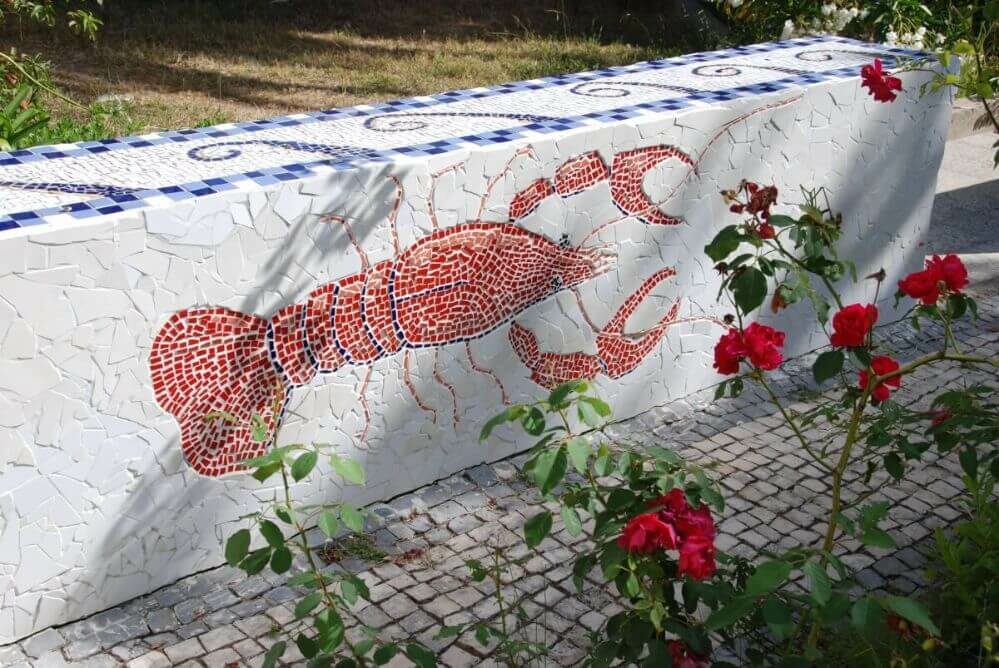The building we live in is more than a hundred years old. The core was built as a bathhouse, with fifteen bathing cubicles. The water is medicinal and good for skin diseases.
It was done according to good old Portuguese building traditions
That building tradition is called: piecemeal. First the core, the bathing area. It had been there for hundreds of years, but was made of wood. The bathtubs were also once made of wood. When it was modernized at the end of the 19th century, thick walls were built from natural stone. Then we are talking about old-fashioned craftsmanship! Also a typical good old Portuguese building tradition.

The water has medicinal properties, which is why it came here in the first place. It cures skin diseases, eczema and allergies if it has the temperature of the source: about 30 degrees. Hot baths are good for your bones, as the Portuguese say; it gives relief from arthritis and rheumatism, and gives strength for the damp winter.
There is an ingenious system for draining and supplying water underground. The clever builder even managed to get a supply pipe under the road into the subterranean cave, where the water is collected and heated to 30º by Mother Earth. No one knows where and how, because there are no drawings. Before 1953, no drawings were needed and nothing had to be handed in to municipalities.
The Portuguese building traditions also consisted of just building randomly
All the water comes from the plateau of Spain and the adjacent Serra da Estrela, and flows through that cave through our bathhouse, through the rice fields to the sea. As early as 1711, a doctor described the good properties of this water, and the Romans may even have sat here. Finally, Conimbriga (a Roman excavation) is only 30 kilometers away.
But enough about the underground water, last week it was more about the top of the building. The protection against the water that falls from the sky: the roof. And of course we do that at the time of year when it (hopefully) doesn’t fall from the sky, because if you go and get rid of your roof, it better stay dry.

In 1969, a floor was added to the bathhouse to accommodate all guests. It was a great success, people came from far and wide. Since the on-site doctor prescribed that you needed so many baths for your ailment (funny: always an odd number), you had to stay for 9, 11 or 13 days.
The first floor has about 15 rooms, as many as the bathrooms downstairs, a few common areas, and two toilets, with an enormous flat roof. Apparently the flat roof wasn’t such a great idea after all. A flat roof has the major disadvantage that it drains poorly and is warm. In the seventies three roof points were added.

When we came here, it was just bare stone. We plastered it and painted it white, but the trouble is: you can keep on going painting it white. It becomes grimy every time, gray stripes, black spots… it doesn’t look good … again. You have to go back onto the scaffolding to high-pressure-clean it and whitewash it again.
Those roof tops drove me up the wall
When I noticed that a significant repair was needed at one point, it seemed like a good reason to remove a piece of it. The plan was there, we just had to wait for the dry season.
It’s here now, you could say! Just when we have to go on the roof, the temperatures rise above 30º.
Nice temperature for the water, but much less if you are there on top!
.
We moved here in 2000 from Rotterdam, Holland to the Termas-da-Azenha, Portugal.
A big step, especially with two small children.
We are busy to rebuild one of portugals cultural heirlooms: Termas-da-Azenha, an old spa which has been turned into several holiday houses, rooms and a campsite.
You’ll find mosaics and paintings everywhere.
Since 2018 we call ourselves the first B&B&B in the world – Bed & Breakfast & Bathrobes. You can buy a home-made unique bathrobe/housecoat with us.
Each week a little blog about what is happening around us. An easy read. A few minutes in another world. A little about what it going on in Portugal. If you plan your holiday to Portugal, it might be a nice preparation
You can subscribe to this blog- see at the right side of this page »
You’ll get it every weekend in your mailbox.
On Sunday morning we publish it on our Facebook, on Pinterest and on Instagram.

Pingback: Portugal on fire, and a lizard on the beach - Termas-da-Azenha
Pingback: Mosaic freaks - Termas-da-Azenha
Pingback: Foreign decisions on Portuguese architecture - Termas-da-Azenha